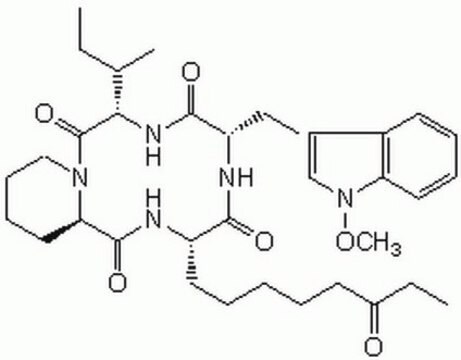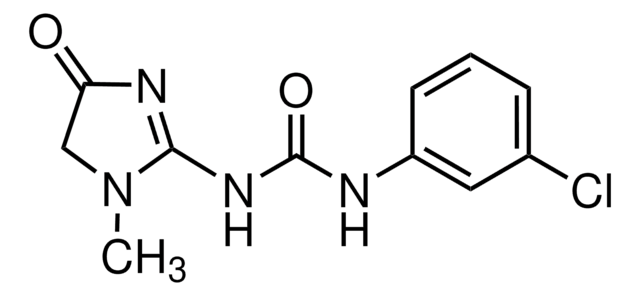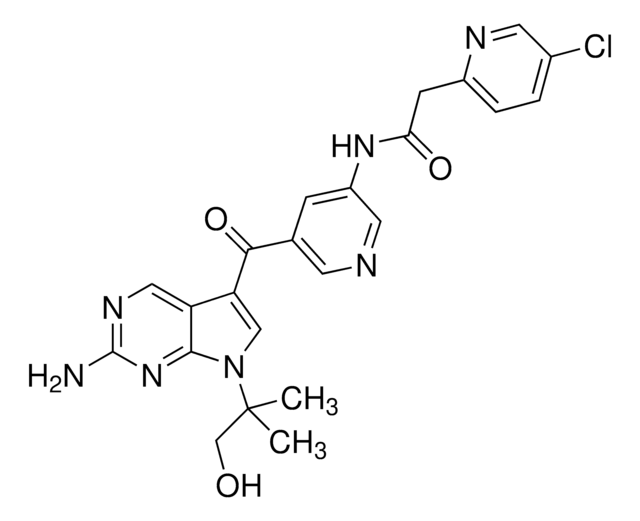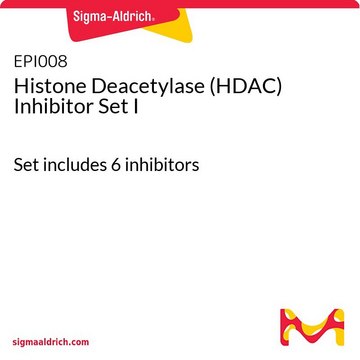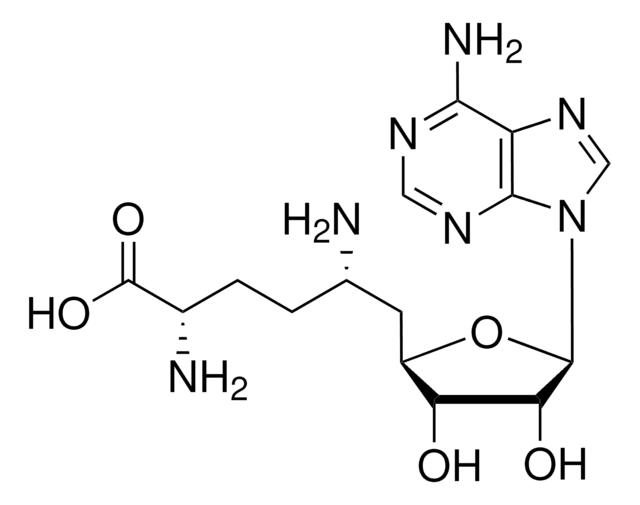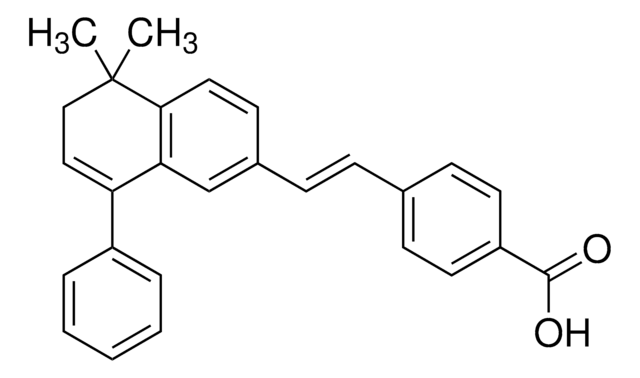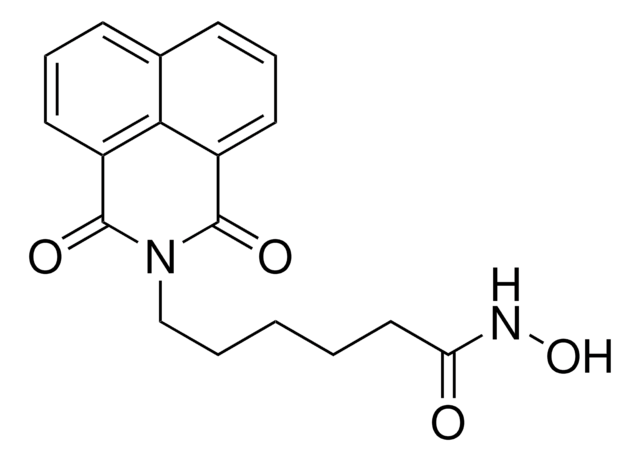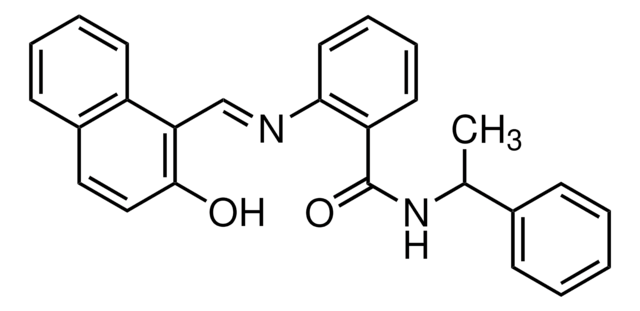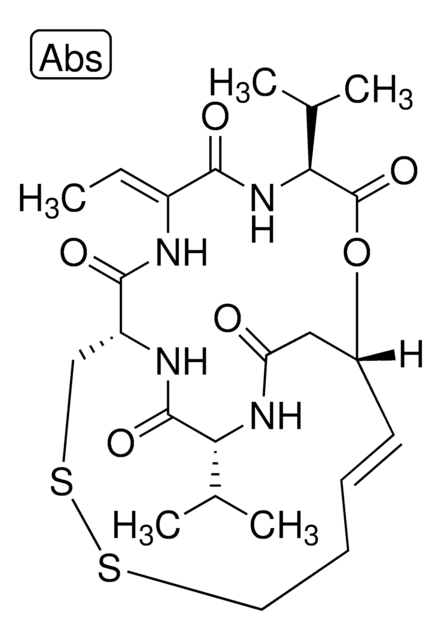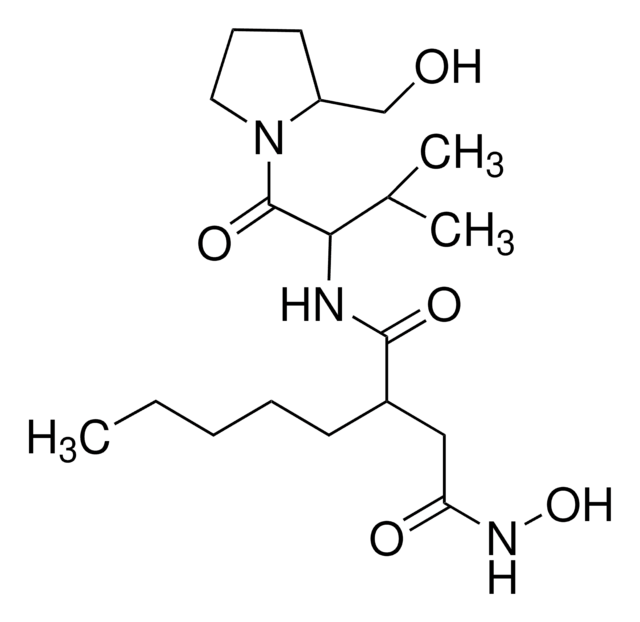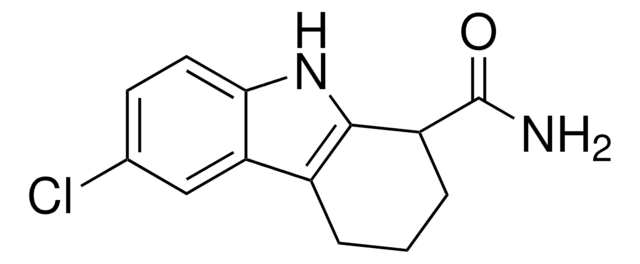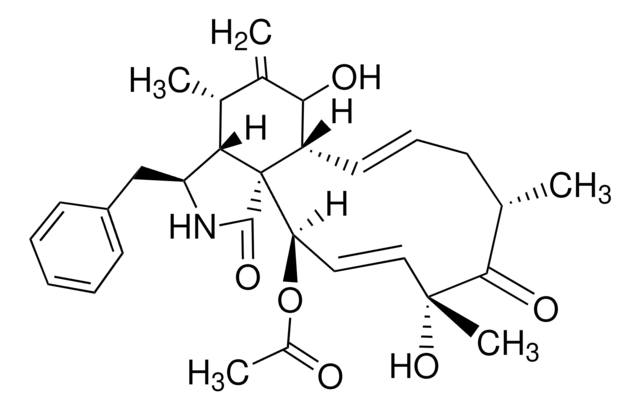A8851
Apicidin
≥98% (HPLC), from microbial
Synonym(s):
Cyclo[(2S)-2-amino-8-oxodecanoyl-1-methoxy-L-tryptophyl-L-isoleucyl-(2R)-2-piperidinexcarbonyl]
About This Item
Recommended Products
biological source
microbial
Quality Level
sterility
non-sterile
Assay
≥98% (HPLC)
form
solid
solubility
DMSO: ~1 mg/mL
antibiotic activity spectrum
parasites
Mode of action
enzyme | inhibits
shipped in
wet ice
storage temp.
−20°C
SMILES string
[H][C@]12CCCCN1C(=O)[C@@H](NC(=O)[C@H](Cc3cn(OC)c4ccccc34)NC(=O)[C@H](CCCCCC(=O)CC)NC2=O)C(C)CC
InChI
1S/C34H49N5O6/c1-5-22(3)30-34(44)38-19-13-12-18-29(38)33(43)35-26(16-9-7-8-14-24(40)6-2)31(41)36-27(32(42)37-30)20-23-21-39(45-4)28-17-11-10-15-25(23)28/h10-11,15,17,21-22,26-27,29-30H,5-9,12-14,16,18-20H2,1-4H3,(H,35,43)(H,36,41)(H,37,42)/t22?,26-,27-,29+,30?/m0/s1
InChI key
JWOGUUIOCYMBPV-PYAAAQPJSA-N
General description
Application
Biochem/physiol Actions
Features and Benefits
Storage Class Code
11 - Combustible Solids
WGK
WGK 3
Flash Point(F)
Not applicable
Flash Point(C)
Not applicable
Personal Protective Equipment
Certificates of Analysis (COA)
Search for Certificates of Analysis (COA) by entering the products Lot/Batch Number. Lot and Batch Numbers can be found on a product’s label following the words ‘Lot’ or ‘Batch’.
Already Own This Product?
Find documentation for the products that you have recently purchased in the Document Library.
Customers Also Viewed
Articles
Cancer research has revealed that the classical model of carcinogenesis, a three step process consisting of initiation, promotion, and progression, is not complete.
Epigenetic modifications are thought to occur through two key interconnected processes—DNA methylation and the covalent modification of histones.
Our team of scientists has experience in all areas of research including Life Science, Material Science, Chemical Synthesis, Chromatography, Analytical and many others.
Contact Technical Service